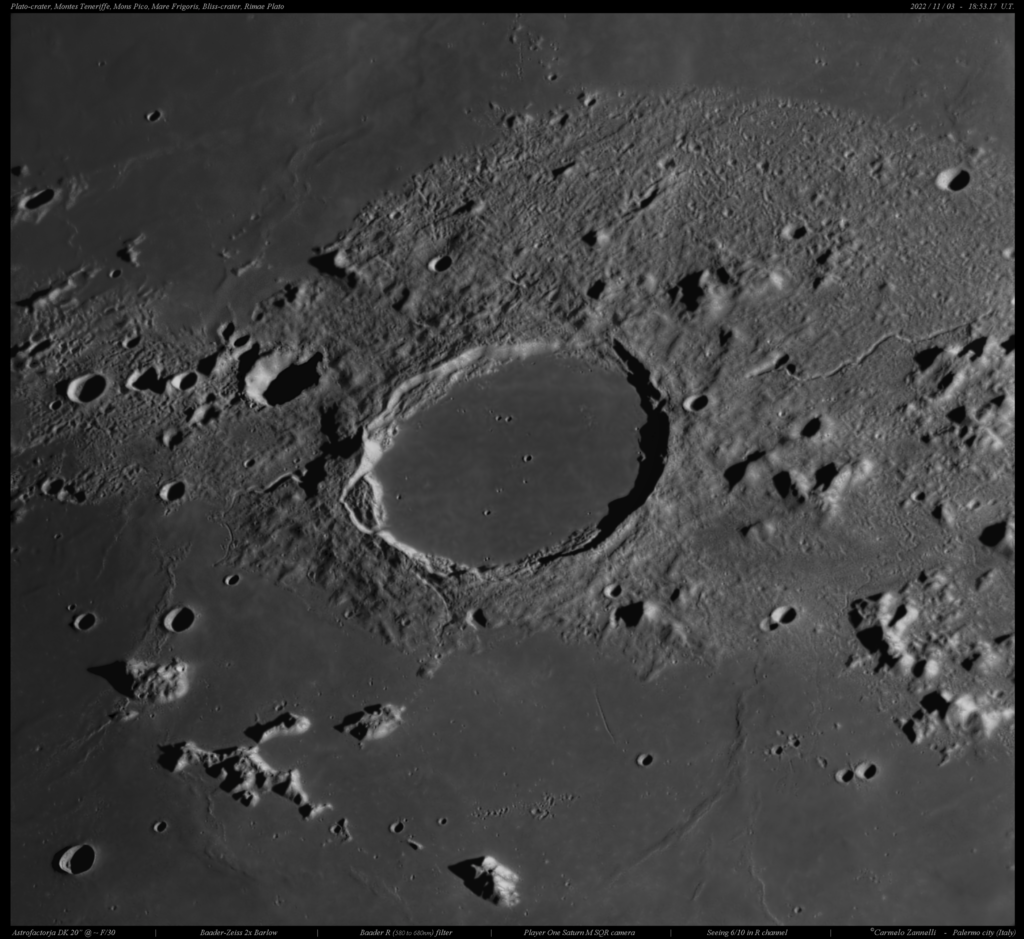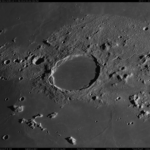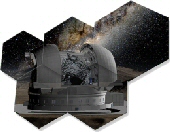Italiano:
Durante la fase di test del telescopio DK da 20″, subito prima di riprendere il pianeta Giove (v. link: https://www.carmelozannelli.com/site/?p=2927 ), ho ripreso alcuni paesaggi lunari tra cui questo che vi presento, che ritrae l’area intorno al magnifico cratere “Plato”.
La trasparenza del cielo era buona ed anche il seeing (la stabilità atmosferica), a prima vista, sembrava discreto ma analizzando in dettaglio l’immagine al monitor era evidente la mancanza di microdettaglio e la presenza di forte corrente a getto (jetsream) che pervadeva l’immagine.
Questo cratere circolare si è formato circa 3,5 miliardi di anni fa, ha un diametro di 104 km. ed è caratterizzato dal suo immenso fondo piatto riempito di lava scura con numerose macchie chiare e piccoli crateri. Evidenti e molto caratteristiche almeno tre frane del bordo terrazzato del cratere.
Molto belli ed affascinanti anche, per chi è appassionato di morfologia lunare, i “Montes Teneriffe” e “Mons Pico” che si stagliano sul fondo lavico dell’immenso “Mare Imbrium” .
Dettagli Tecnici:
Telescopio Astrofaktoria DK20″ @ ~ F/27 – Player One Saturn M camera – Baader-Zeiss Abbe Barlow 2x – Baader RGB filters – Seeing ~ 6/10 (max.) in R band – sito: Palermo @ my personal Observatory.
*****************************************************************************************************************************
English:
During the optical test imaging of the 20″ DK telescope, just before filming the planet Jupiter (see link: https://www.carmelozannelli.com/site/?p=2927 ), I filmed some lunar landscapes including this one that I present to you, which portrays the area around the magnificent crater “Plato”.
The transparency of the sky was good and also the seeing, at first glance, but zooming in and analyzing in detail the direct image on the monitor, it was evident the lack of micro-detail and the presence of a strong jet stream (jetsream) which pervaded the image.
This circular crater was formed about 3.5 billion years ago and has a diameter of 104 km. and is characterized by its immense flat bottom filled with dark lava with numerous light spots and small craters. Evident and very characteristic at least three landslides of the terraced edge of the crater. Also very beautiful and fascinating, for those who are fond of lunar morphology, the “Montes Teneriffe” and “Mons Pico” which stand out against the lava bottom of the immense “Mare Imbrium” .
Technical Details:
Astrofaktorja Telescope DK20 “@ ~ F/27 – PlayerOne Saturn M camera – Baader-Zeiss Abbe Barlow 2x – Baader RGB filters – Seeing ~ 6/10 (max.) in R band – site: Palermo @ my personal Observatory.


